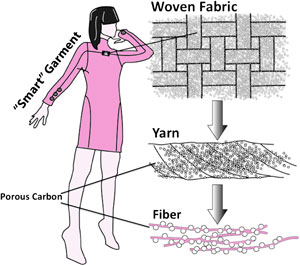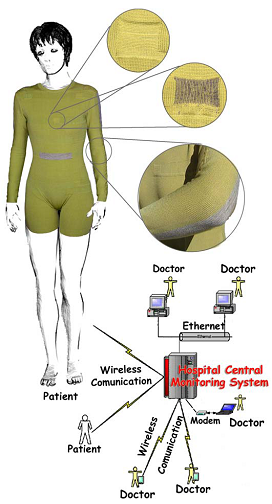13th January 2014 Montreal, Canada
Fashion goes geeky
We are moving closer to the point where we want full 24/7 access to our information data and technology. One of the most obvious ways to stay connected is to integrate this technology into our clothing. Although the fashion industry has always been avant-garde, it has however lagged behind in the use of Information Technology. But this situation is changing remarkably fast as technology and fashion have been flirting lately! In order to be “fashion-forward” nowadays, it is increasingly necessary to have incorporated electronic textiles into design. This enables computationally-mediated interactions with the surrounding environment and the individual. Whether purely decorative or eminently practical, these wearable “electronic garments” are changing the appearance and functionality of prêt à porter items (e.g. from ball gowns to bracelets and from eyewear to jeans).
The last 3 years have seen a dramatic growth in the market for garments using smart textiles and other wearable technologies. Both the textile and healthcare sectors are looking with great interest at innovative products that could result from the integration of microsystems, nanotechnologies, biomedical sensors, reactive textiles, GPS navigations sensors, and mobile telecommunications. For healthcare, rehabilitation, and sport medicine, smart garments may offer, in the mid-term future a unique wearable non-obtrusive telemedicine platform for individualised services. Canadian and British research institutes and businesses have been enthusiastic about smart garments for some time now. For example, since 2006, Carré Technologies and Concordia University in Montréal have been delivering a smart shirt called Hexoskin. It records your heart rate, electrocardiogram, breathing rate and volume. It can be used by amateurs and Olympic athletes alike. The Hexoskin team has also been working closely with the Canadian Space Agency. They are developing a version to be used for remote health monitoring of Canadian astronauts. Also based in Montréal, OMsignal has designed smart garments that continuously track several body metrics – even your emotional state. Imagine a T-shirt that changes colour according to the level of stress! Recently, Orpyx in Calgary has developed a wireless shoe insert – the SurroSense RX™ system – that is meant to help people manage their diabetic peripheral neuropathy. The University of Manchester and the Lancashire Teaching Hospital are currently designing a large-scale, multi-centre and randomized clinical trial of the SurroSense RX device. Also across the pond, the UK company, CuteCircuit, is perhaps the best known fashion label for designing garments with embroidered LED lighting. This was showcased by pop icon Katy Perry who wore one of their evening gowns to the MET Costume Institute Gala in 2010. Lastly, Equivital have even developed tailored real-time physiological human monitoring and data management solutions for their clients.
In conclusion, wearable IT garments and accessories are projected to explode in popularity over the next year and they could soon become the norm for most people within five years. A 2013 Credit Suisse report predicts that wearable technology, already a $5 billion market could reach to $ 50 billion within 2 – 3 years.
With all of the information we have to interact with nowadays, it seems that the best way to stay connected 24/7 is to “wear” our IT. However, the greatest challenge ahead for our scientists is to now develop a laundry detergent capable of removing the dirt, whilst also refreshing the data inside the textile. Can’t wait to test it!


I feel happy when I read about new innovations.